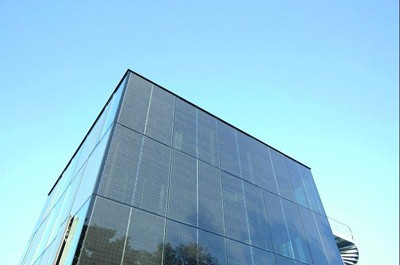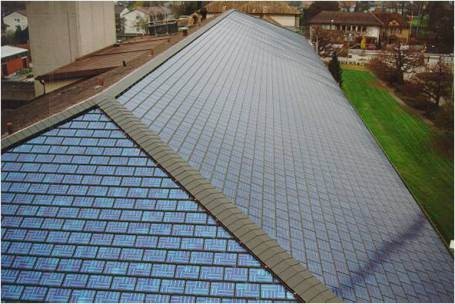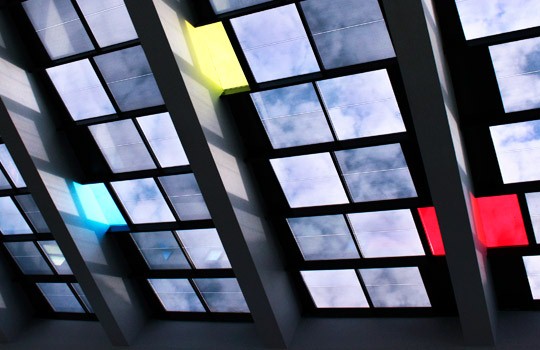Read Solar Mango’s Innovation Blog Post on BIPVs – CLICK HERE
As the name suggests, it is the integration of Photovoltaics into the building envelope. Here the PV system provides two functions; it acts as the building skin and it produces electricity.
In the case of Building Integrated Photovoltaics, the PV panel replaces the conventional building cladding material. It’s found that it is usually better to choose thin-film based PV panel technologies while integrating them in buildings. This is because thin-film technologies offer better aesthetic and flexible structural characteristics.
What advantages do they offer?
The main advantage of BIPV is that a wider area can be applied to generate solar energy than the rooftop solar systems. Just like the other solar PV Systems, BIPV systems too, require little maintenance. Unlike the conventional solar PV systems, they come with attractive and innovative designs are visually appealing.
Where are they applied?
Below listed are a few applications of BIPVs
- Façade:
Here PV is integrated into the sides of buildings, replacing traditional glass windows with semi-transparent thin-film or crystalline solar panels. These have less surface area than rooftop systems but they provide the advantage of increased available area. Let’s look at an interesting BIPV project below. The wide building area available has been widely used to produce solar energy.
Source: Greenapple
- Rooftops:
In such an application, PV material replaces the roofing material, sometimes; the roof itself. Some companies offer an integrated, single-piece solar rooftop and there are others that offer solar shingles than can be used in place of roof shingles.An example of BIPV roofing is given below
Source: Lumen Solar
- Glazing:
Ultra-thin solar cells may be used to create semi-transparent surfaces, which allow daylight to penetrate while simultaneously generating electricity. These are often used to create PV skylights or greenhouses. Given below is glazing based PV technology used to get a skylight:
Source: Onyx Solar
Read Solar Mango’s Innovation Blog Post on BIPVs – CLICK HERE
What are the disadvantages associated with BIPV systems?
- Higher costs, when compared to traditional PV modules, is often quoted as the biggest disadvantage of PV systems.
- Usually, involves more labor costs than usual PV installation
- Difficult to retrofit to old houses and buildings.
BIPV is still an emerging segment in PV systems. More solar panel manufacturers are currently willing to make panels for the BIPV market. Research predicts that the BIPV market will grow to a $26 billion industry by 2022 as compared to a $3 billion industry in 2015.BIPV technology currently remains a niche product due to the high costs involved due to high customization needs.
Related Articles

 Skip to content
Skip to content


